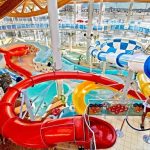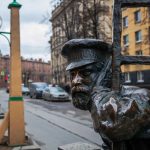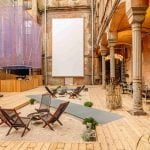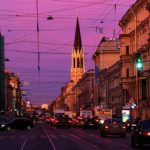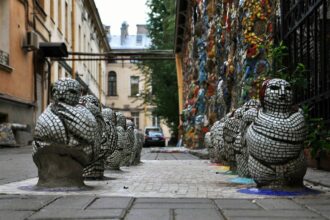The route will lead you though the most beautiful squares of the central part of St. Petersburg
Three central squares of St. Petersburg – Palace Square, Senate Square and St.Isaak’s Square – with the Winter Palace, the General staff building, the Admiralty, St. Isaac’s Cathedral located on them and other buildings form a uniform spatial organism on the bank of Neva.
The ensemble of central squares was created and got the modern look in a result of successive creative activity of several generations of Russian architects. The most responsible task in formation of ensemble of three squares fell to the lot of A. D. Zakharov who created one of the greatest architectural works of the world — the building of the Admiralty serving as a connecting link between Palace Square and Decembrists Square.
The Winter Palace, the Admiralty, St. Isaac’s Cathedral, the Senate and the Synod are turned by their northern facades towards Neva. Its broad water spaces are inseparably linked with prospects of the grandiose squares and powerful massifs of the buildings located on them. Exactly here greatness and a unique originality of architectural panoramas of the city reveals to those who are in love with St. Petersburg with a special force and clarity .
Palace square
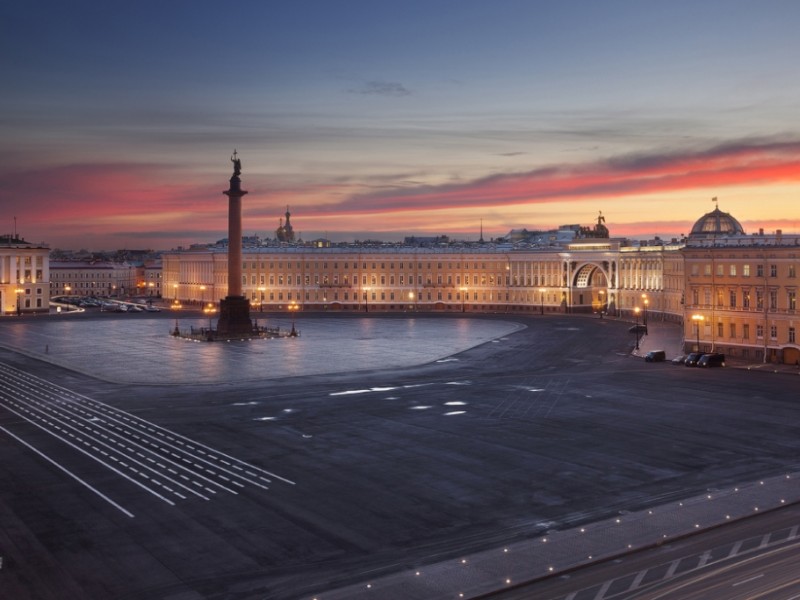
One of the most beautiful and harmonious ensembles of architecture in the world, Palace Square remains the main public space of St. Petersburg throughout nearly three centuries.
Palace Square was laid out in 1819-1829 by Carlo Rossi, a neoclassicist architect of Italian descent who designed a large number of streets and squares in St. Petersburg. The picturesque Baroque Winter Palace (built in 1754-62) stands on the northern side of the square. Across the square, on the southern side, there is a classical yellow-and-white General Staff building (built in 1819-29 by Carlo Rossi). This building encircles the Southern side of the square and through its central arch, designed as a Triumphal Arch of the Classical World, you can reach Nevsky Prospect. On the eastn side the building of the former Royal Guards’ General Staff tastefully closes the panorama of Palace Square, while on the West the square borders with the Admiralty and the Admiralty Garden.
Many significant events took place here, including the Bloody Sunday massacre in 1905 and the October Revolution in 1917.
Today the enormous square is more peaceful. Locals often gather here and tourists gaze at the architectural delights or stand in line to get to the Hermitage. Political rallies and official ceremonies still take place here, although today you’re more likely to see a concert or festival here.
The Admiralty Embankment

The youngest of all front embankments of the historic center of St. Petersburg
The Admiralty Embankment (Russian: Адмиралтейская набережная (Admiralteyskaya Naberezhnaya)) or Admiralty Quay is a street along the Neva River in Central Saint Petersburg, named after theAdmiralty Board. Between 1919 and 1944 the street was known as Roshal Embankment, named after the revolutionary S. G. Roshal.
The Admiralty Embankment was constructed in 1763 to 1767, by the engineers V. M. Karlowicz and S. S. Selyavionov. The street has no other buildings than the Admiralty and the Bronze Horseman.
The street begins at the Decembrists Square, where the English Embankment becomes the Admiralty Embankment. The street ends at the Palace Bridge, where it becomes the Palace Embankment.
The Admiralty Embankment is home to the Admiralty Board and the Bronze Horseman, it has also a wonderful view of the Neva and the Saint Petersburg State University is just across the Neva.
Monument to Peter I on Senate Square (Bronze Horseman)

Monument to the founder of St.Petersburg
Commissioned by Catherine the Great, the monument was created by the French sculptor Étienne Maurice Falconet in 1782. The second name (the Bronze Horseman) comes from the same name poem written by Aleksander Pushkin (1833). The monument symbolizes the Russian victory over Sweden in the Northern War (1700-1721): the snake symbolizes a defeated enemy, the horse symbolizes Russia. The pedestal of this monument is a huge so-called «thunder-stone», which was delivered to Senate Square from a borough Lakhta.
There is a legend that one can find the name of Étienne Falconet on a fold of Peter the Great’s cloak.
Senate Square
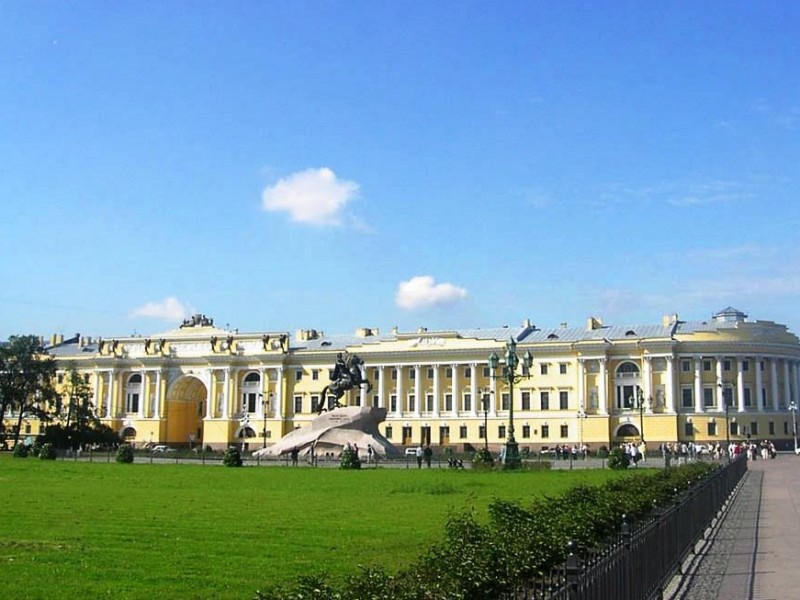
One of the oldest squares in St. Petersburg
Senate Square, formerly known as Decembrists’ Square in 1925-2008, and Peter’s Square, before 1925, is a city square in Saint Petersburg, Russia. It is situated on the left bank of the Bolshaya Neva, in front of Saint Isaac’s Cathedral. In 1925 it was renamed Decembrists Square to commemorate the Decembrist Revolt, which took place there in 1825.
The square is bounded by the Admiralty building to the east. On the west there is the Senate and Synod Building (now headquarters of the Constitutional Court of Russia). The Bronze Horseman monument adorns the square. On July 29, 2008, the square was renamed back to Senate Square.
St.Isaac’s Square
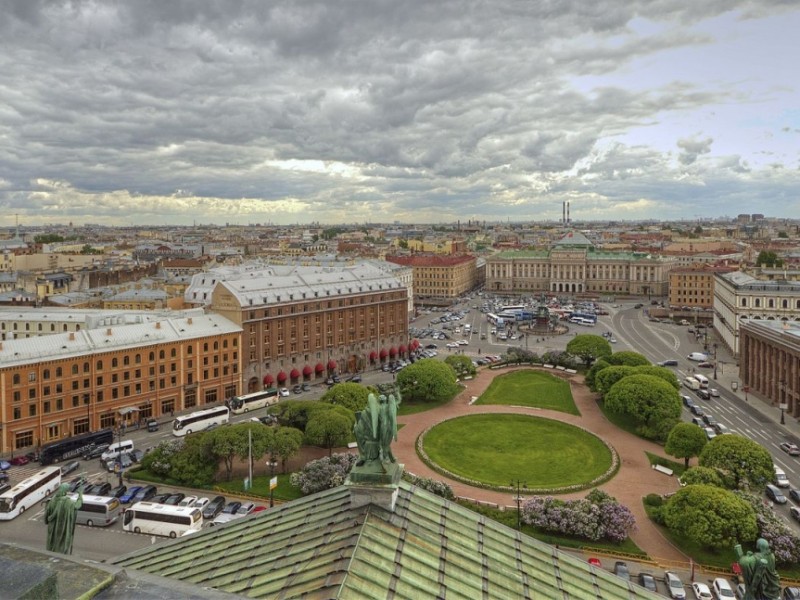
St.Isaac’s Square is a classic example of landscape ensemble second half of XIX century
The square which is situated in the historic center of the city between St.Isaac’s Cathedral and the statue to Nicolas I. This statue was the first equestrian statue with two support points erected in Europe – the technical wonder that saved it from being demolished in the Soviet times. The “Angleterre” hotel, notorious for the tragic death of S.Yesenin, turn its facade to the square. The composition of the square includes the Blue bridge connecting the two banks of the Moika river famous for its series of “bridges of color”. The Blue bridge is the widest in St.Petersburg.
In the days of the Siege of Leningrad the garden-beds were used for raising vegetables.
Seek for the water measuring column at the corner of the house N 44, Bolshaya Morskaya st, at the Blue bridge. The column shows the levels of most important floods of the city. The greatest took place in 1824 when the flood lifted up to 421 cm. Note the sun-clock.
Alexander Garden

The garden was opened in 1874. It is called in honor of the emperor Alexander II
The garden is situated in the very center of St.Petersburg nearby its landmarks: the Winter palace, the Admiralty, St.Isaac’s Cathedral and the Bronze Horseman monument. It is named after the emperor Alexander II famous for the abolition of serfdom in Russia, who ruled the country in the days when the garden was opened to public. The territory would once be occupied by fortifications defending the Admiralty, years after that the Admiralty meadow was set up to be later on divided into three squares: Admiralteyskaya, Isaakiyevskaya and Senatskaya. In 1874 the Alexander garden was opened with more than 5 thousand trees, more than 12,5 thousand bushes of 52 kinds having been planted. The landmarks that call the public attention are, firstly, the Bronze Horseman – the monument to Peter the Great, secondly, a part of the rail tracks of the first line of the tramway launched in St.Petersburg, marked by a memorial stone, and thirdly, by a great fountain surrounded by the statues of Russian poets and composers.
During the Siege of Leningrad none of the trees were felled to make logs for the fire.
During the rule of the empress Anna Ioannovna in the 18th century the Admiralty meadow was the place to host public feasts accompanied with bonfires, fountains of wine and «amusement palaces» made of ice being constructed.
There is a camel somewhere in the park.
Building of the Main Admiralty

The first building on the left bank of the Neva River
It is one of the most important sight of St. Petersurg. Firstly having been constructed as a shipyard, at present the Admiralty building is the Headquarters of the Russian Navy.Three central streets of St. Petersburg split off from the Admiralty Spire as three rays.: Nevsky Avenue, Gorokhovaya Street and Voznesensky Avenue. On the top of the 72,5 meter spire one can see the symbol of St. Petersburg — a gilded weather vane in the form of a ship.
According to the legend, the silhouette of the weather vane repeats a contour of the first ship which came into the port of St. Petersburg soon after the foundation of the city.
Find the Admiralty spire from Gorokhovaya Street, Voznesensky and Nesky Avenue. Just because of this interesting possibility — one can see the spire from these 3 streets — in the 19th century the Admiralty was jestingly called a «Pole Star» or «Nevsky trident».







